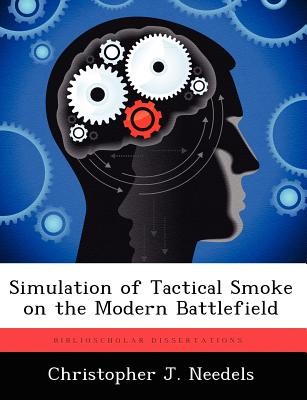
- We will send in 10–14 business days.
- Author: Christopher J Needels
- Publisher: BiblioScholar
- ISBN-10: 124927415X
- ISBN-13: 9781249274155
- Format: 18.9 x 24.6 x 0.4 cm, minkšti viršeliai
- Language: English
- SAVE -10% with code: EXTRA
Simulation of Tactical Smoke on the Modern Battlefield (e-book) (used book) | bookbook.eu
Reviews
Description
Recent intelligence reports indicate that Warsaw Pact forces are placing increased emphasis on the use of tactical smoke. In response, US forces have begun to evaluate their own capabilities to employ smoke. One method of conducting this evaluation is to include smoke employment in combat models. This thesis presents a computer model, SIMSMOKE, which has this capability. The first part of the model consists of simulating the smoke employment tactics within a given tactical scenario. Input variables pertaining to command guidance, type of operation, weather conditions, and weapons and ammunition available provide the setting. At the appropriate time during the battle, smoke is automatically placed on or near the opposing force's locations so that the smoke clouds drift into the line-of-sight between attacker and defender. The second part of the model consists of computing if intervisibility exists between opposing forces at each second of the battle. As a representation of a smoke cloud, a sphere is used to simulate white phosphorous (WP) and a cone is used to simulate hexachoroethane (He). The program calculates if the line-of-sight intersects any part of either one of these types of three dimensional figures. If an intersection occurs, the line-of-sight is blocked; therefore, intervisibility does not exist. A series of test runs were conducted to verify the model. Bursting radii of the smoke rounds, atmospheric stability conditions, type of smoke munitions, wind speeds, and wind directions were the parameters varied for the tests. In all cases the model produced results consistent with the expected outcome. The methodology used in this study provides a basis for future simulations of tactical smoke employment in computerized combat models.
EXTRA 10 % discount with code: EXTRA
The promotion ends in 23d.14:26:49
The discount code is valid when purchasing from 10 €. Discounts do not stack.
- Author: Christopher J Needels
- Publisher: BiblioScholar
- ISBN-10: 124927415X
- ISBN-13: 9781249274155
- Format: 18.9 x 24.6 x 0.4 cm, minkšti viršeliai
- Language: English English
Recent intelligence reports indicate that Warsaw Pact forces are placing increased emphasis on the use of tactical smoke. In response, US forces have begun to evaluate their own capabilities to employ smoke. One method of conducting this evaluation is to include smoke employment in combat models. This thesis presents a computer model, SIMSMOKE, which has this capability. The first part of the model consists of simulating the smoke employment tactics within a given tactical scenario. Input variables pertaining to command guidance, type of operation, weather conditions, and weapons and ammunition available provide the setting. At the appropriate time during the battle, smoke is automatically placed on or near the opposing force's locations so that the smoke clouds drift into the line-of-sight between attacker and defender. The second part of the model consists of computing if intervisibility exists between opposing forces at each second of the battle. As a representation of a smoke cloud, a sphere is used to simulate white phosphorous (WP) and a cone is used to simulate hexachoroethane (He). The program calculates if the line-of-sight intersects any part of either one of these types of three dimensional figures. If an intersection occurs, the line-of-sight is blocked; therefore, intervisibility does not exist. A series of test runs were conducted to verify the model. Bursting radii of the smoke rounds, atmospheric stability conditions, type of smoke munitions, wind speeds, and wind directions were the parameters varied for the tests. In all cases the model produced results consistent with the expected outcome. The methodology used in this study provides a basis for future simulations of tactical smoke employment in computerized combat models.


Reviews